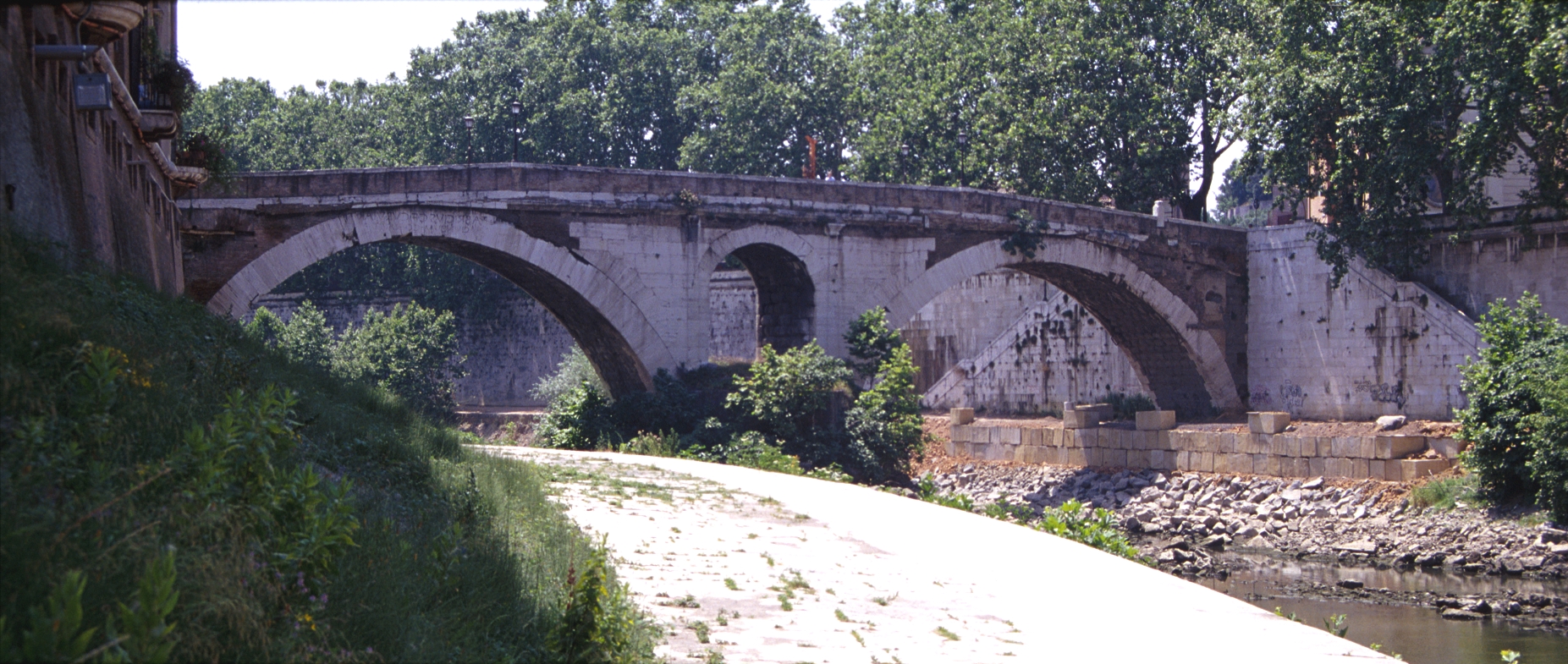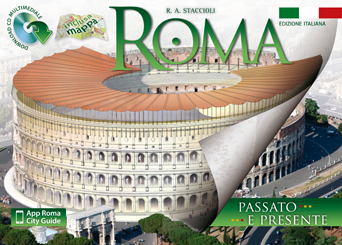According to ancient tradition, the Tiber Island was formed after the expulsion of the last king, Tarquin the Proud, when the people threw into the river the sheaves of wheat belonging to the fugitive king, which they had looted from the Campus Martius.
In actual fact, however, the island must have developed by natural means at a point where the river broadened and the strength of its currents became very weak and, what is more, long before the Romans chased out the Tarquins.
The island was of very great importance in the archaic period because it facilitated the crossing of the river and thus ensured continuity in the lines of communication that linked the Tyrrhenian seaboard to the north of the river with its counterpart to the south.
The island was therefore a strategic point and, as such, was one of the causes that brought the city of Rome into being.
A great embankment wall built round the island gave it the appearance of a boat, and a small obelisk erected in the center, suggesting a mast, further enhanced this effect.
In 291 BC a Temple of Aesculapius was established there in the aftermath of a grave pestilence and from that time onwards the island acquired a sacred character connected essentially with health practices and the cult of the god of medicine.
The temple was surrounded by porticoes which provided shelter for the sick pilgrims who came to be cured. It is noteworthy that the island has retained this function up to the present day, with the presence of a modern hospital (run, what is more, by a religious order).
Towards the end of the Republic the island was linked to the land by two bridges.

Photo credits by Tyler Bell.
The Pons Fabricius, leading to the left bank, was constructed in 62 BC, probably to replace an earlier wooden structure, and it is still completely preserved.
The Pons Cestius, which leads to the right bank and the area of Trastevere (Transtiber), was put up shortly after, in 46 BC, but then wholly rebuilt by the Emperors Valentinian I, Valens and Gratian in 370 AD. Unfortunately, however, even this bridge was completely reconstructed towards the end of last century.

Do you want to know more about the history of Rome?
Check out our guidebook to Rome, with detailed history and Past & Present images of the Pantheon, the Colosseum, Trajan’s Market and all the greatest historical and archaeological sites of the eternal city.

